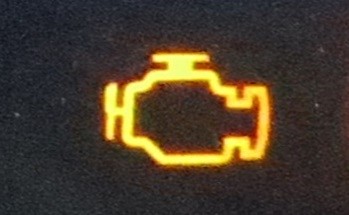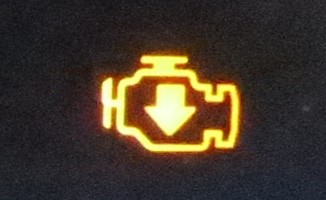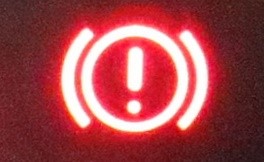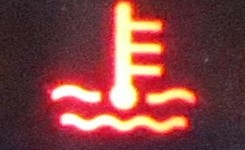You’re driving along, and suddenly a symbol lights up on your dashboard. It looks like a hieroglyphic and you have no idea what it means. What should you do? Each warning light is trying to tell you something, but you must know the language of your vehicle to determine which warning lights demand immediate attention, and which ones can wait until you get home. Having your vehicle towed to a repair shop could be avoided – or it might be urgently required!
Green, Yellow and Red
—–
While not regulated by the auto industry, dashboard warning lights share common colour coding characteristics across most manufacturers. Think of it like a traffic light:
- GREEN: Green and blue are normal vehicle operation colours and may include things like low windshield washer fluid and high beam indicator.
- YELLOW: The check engine light and maintenance required lights are typically orange or yellow and are of medium importance. They should be assessed as soon as possible.
- RED: Red indicates safety hazards and serious malfunctions that require immediate attention. Brake failure, low oil and engine overheating lamps are usually red. Drivers should stop and seek immediate service. These lights may even add an audible beep to notify the driver of their extreme importance.
Five Common Dashboard Lights Explained
—–
 Check engine light: This indicates a problem with the emissions system. Often, the light goes on if you have not tightened your gas cap properly. The light may go out after you tighten the cap, and/or have restarted the engine. A steady light means service is required, but it isn’t an emergency. If it’s blinking, take the car in as soon as possible, as this indicates a more serious problem, such as an engine misfire that could damage the catalytic converter.
Check engine light: This indicates a problem with the emissions system. Often, the light goes on if you have not tightened your gas cap properly. The light may go out after you tighten the cap, and/or have restarted the engine. A steady light means service is required, but it isn’t an emergency. If it’s blinking, take the car in as soon as possible, as this indicates a more serious problem, such as an engine misfire that could damage the catalytic converter.
 Engine power restriction: This light will come on to indicate that your engine power is restricted due to a malfunction. You won’t be able to exceed a set speed no matter how hard you hit the gas. You will need to get the issue diagnosed and repaired in order to drive normally again.
Engine power restriction: This light will come on to indicate that your engine power is restricted due to a malfunction. You won’t be able to exceed a set speed no matter how hard you hit the gas. You will need to get the issue diagnosed and repaired in order to drive normally again.
 Oil pressure warning: Pull over and shut off the engine as soon as you can because insufficient oil pressure can cause serious damage to the engine very quickly. Either there isn’t enough oil in the engine, or the oil pump is malfunctioning. (Premium vehicles may have a separate light to warn that the oil level is getting low.)
Oil pressure warning: Pull over and shut off the engine as soon as you can because insufficient oil pressure can cause serious damage to the engine very quickly. Either there isn’t enough oil in the engine, or the oil pump is malfunctioning. (Premium vehicles may have a separate light to warn that the oil level is getting low.)
 Brake warning: Two things could be going on: you may have left the parking brake on (sometimes there’s a separate light with a “P” in the circle), or there may be a problem with your brakes, such as loss of hydraulic pressure, low brake fluid, or excessively worn brake pads. Get your vehicle to the shop as soon as possible, especially if the brake pedal feels spongy.
Brake warning: Two things could be going on: you may have left the parking brake on (sometimes there’s a separate light with a “P” in the circle), or there may be a problem with your brakes, such as loss of hydraulic pressure, low brake fluid, or excessively worn brake pads. Get your vehicle to the shop as soon as possible, especially if the brake pedal feels spongy.
 Engine temperature warning: If your engine is dangerously hot, usually from a loss of coolant, this symbol lights up. To avoid engine damage, turn the car off quickly. (If your car has a temperature gauge, shut off the engine if the needle goes into the red zone.) Never open the radiator cap on a hot engine. The fluid will gush out and can scald you badly.
Engine temperature warning: If your engine is dangerously hot, usually from a loss of coolant, this symbol lights up. To avoid engine damage, turn the car off quickly. (If your car has a temperature gauge, shut off the engine if the needle goes into the red zone.) Never open the radiator cap on a hot engine. The fluid will gush out and can scald you badly.
- CAA: 63 dashboard lights
- Which warning lights are most important? (photo credit)
_________________________
OSPE has a partnership with The Personal Insurance Company with regards to home and auto insurance for our engineers, engineering graduates and engineering students.
- To find out more, call 1-888-476-8737.
- Or visit https://ospe.on.ca/wp-content/uploads/2024/10/academy-banner-7.png.thepersonal.com
The Personal refers to The Personal General Insurance Inc. in Quebec and The Personal Insurance Company in all other provinces and territories.
The information in this article is provided for informational purposes only. The Personal shall not be liable for any damages arising from any reliance upon such information or advice. The Personal recommends using caution and consulting an expert for comprehensive, expert advice.





Leave a Comment